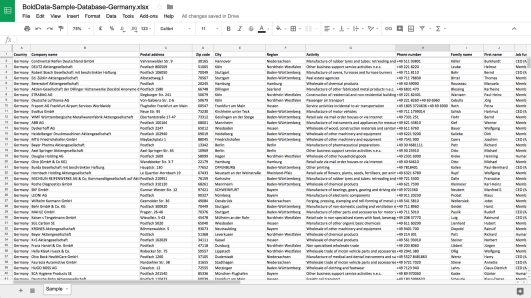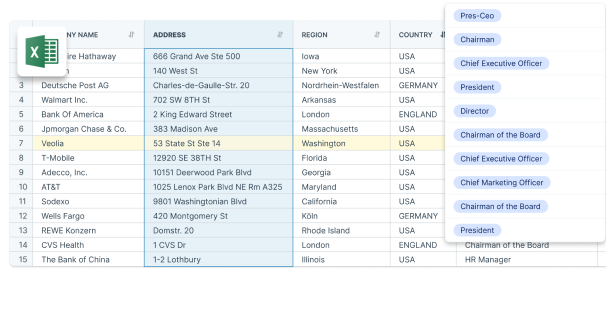Introduction
Call centers play a vital role in how businesses interact with their customers today. It’s important to choose the right type of call centers—inbound call centers or outbound call centers—to effectively meet your specific business needs.
In this article, we’ll compare the functions and benefits of inbound and outbound call centers to help you make an informed decision.
Effective call center operations require precise data. BoldData offers comprehensive coverage and customized lists tailored to your needs. You can even buy B2B call center data worldwide from them, which can greatly enhance your telemarketing efforts.
Understanding Inbound Call Centers
Inbound call centers primarily handle incoming calls from customers. These centers focus on providing exceptional customer service by addressing inquiries, resolving issues, and offering technical support.
Role of Customer Service
Customer service is paramount in inbound call centers. It drives success through:
- Building customer loyalty
- Enhancing customer retention rates
Effective customer service ensures that customers feel valued and heard, which fosters long-term relationships.
Benefits of Inbound Call Centers
Using an inbound call center strategy offers several advantages:
- Improved Customer Loyalty: Personalized support makes customers feel appreciated.
- Higher Retention Rates: Satisfied customers are less likely to switch to competitors.
- Efficient Issue Resolution: Quick responses to technical problems or inquiries improve overall satisfaction.
Typical Activities Handled
Inbound call centers manage various tasks, such as:
- Customer Service: Addressing general inquiries and concerns.
- Technical Support: Assisting with product or service-related issues.
- Sales Inquiries: Handling questions about products, services, and promotions.
These activities help businesses maintain a responsive and supportive presence for their customers.
Exploring Outbound Call Centers
Outbound call centers primarily focus on making calls to potential or existing customers. The main functions include:
- Sales: Actively reaching out to prospects to sell products or services.
- Publicity: Promoting brand awareness and advertising new offerings.
Sales and publicity drive success in outbound call centers by creating direct contact with potential leads. This strategy helps in building a sales pipeline and expanding market reach.
Cold Calls vs. Warm Calls
- Cold Calls: Unsolicited calls to individuals who have not shown prior interest. Used for lead generation.
- Warm Calls: Calls made to individuals who have previously expressed interest.
These are more likely to convert into sales.
Typical Activities in Outbound Call Centers
- Appointment Setting: Coordinating meetings between sales representatives and potential clients.
- Lead Generation: Identifying and qualifying potential customers.
- Telemarketing: Selling products or services directly over the phone.
Outbound call centers play a critical role in proactive customer engagement, driving revenue, and expanding brand presence.
Comparing the Functions and Benefits of Inbound vs. Outbound Call Centers
Customer Interaction Methods
Differences in Customer Interaction Approach
Inbound call centers primarily handle incoming calls from customers seeking assistance or information. These interactions are usually customer-initiated, focusing on:
- Customer Service: Addressing queries, complaints, and providing support.
- Technical Support: Troubleshooting issues with products or services.
- Sales Inquiries: Answering questions about products and processing orders.
On the other hand, outbound call centers actively reach out to potential or existing customers. Their interactions are company-initiated, concentrating on:
- Lead Generation: Identifying and contacting prospects who might be interested in their offerings.
- Telemarketing: Promoting products or services to a targeted list of potential buyers.
- Appointment Setting: Scheduling meetings between sales teams and prospective clients.
Impact on Customer Experience
The communication methods used by inbound and outbound call centers have a significant impact on the customer experience.
Benefits of Inbound Call Centers:
- Responsiveness: Customers appreciate quick resolutions to their issues.
- Personalization: Calls are tailored to individual needs, fostering loyalty.
Challenges of Outbound Call Centers:
- Intrusiveness: Unsolicited calls can be perceived as bothersome.
- Relevance: Messaging must be highly targeted to avoid alienating potential customers.
Potential Benefits of Outbound Call Centers:
- Proactive Solutions: Introducing solutions that customers may not have known they needed.
- Customer Engagement: Keeping customers informed about new products or services.
Understanding these differences can help businesses tailor their approach for maximum impact.
Sales and Revenue Generation Strategies
The Crucial Role of Sales and Revenue Generation in Outbound Call Centers
Sales and revenue generation are the backbone of outbound call centers. These centers focus on reaching out to potential customers, promoting products or services, and driving sales growth. Their primary function revolves around direct customer engagement to generate leads and close deals.
Common Sales Strategies in Outbound Settings
Outbound call centers employ various sales strategies to maximize their effectiveness:
- Cold Calling: Initiating contact with potential customers who have not previously expressed interest. This strategy requires a persuasive pitch and resilience.
- Warm Calling: Following up with leads who have shown some level of interest in the past. These calls tend to have higher conversion rates due to pre-established interest.
- Appointment Setting: Arranging meetings between sales teams and potential clients to discuss products or services in depth.
- Telemarketing: Promoting products or services directly over the phone to generate immediate sales or interest.
By leveraging these strategies, outbound call centers contribute significantly to a business’s revenue stream. The success of these strategies depends on the quality of data used, making comprehensive call center databases like BoldData’s essential for effective operations.
Customer Service Excellence
Emphasizing the Importance of Customer Service
Inbound call centers thrive on providing exceptional customer service. Superior service is not a luxury; it is a necessity that drives success, builds trust, and nurtures loyalty. A satisfied customer is more likely to become a repeat customer, enhancing retention rates and building a strong foundation for future growth.
Effective Customer Service Techniques
Inbound call centers employ various techniques to resolve issues and enhance satisfaction levels:
- Personalized Interactions: Agents personalize interactions by addressing customers by name and understanding their history with the company. This creates a sense of value and importance.
- Efficient Problem Solving: Quick and effective resolution of issues through well-trained agents who have access to comprehensive knowledge bases.
- Active Listening: Agents are trained to listen actively, understanding the customer’s concerns fully before offering solutions. This ensures the customer feels heard and valued.
- Follow-Up: Post-interaction follow-ups ensure that the solution provided was effective, further cementing trust and reliability.
By focusing on these techniques, inbound call centers not only resolve issues but also create positive experiences that enhance overall satisfaction. These strategies underline the crucial role of customer service in an inbound call center’s success.
Determining Which Call Center Suits Your Needs
Key Factors to Consider
When choosing a call center, it’s essential to evaluate:
- Business Goals: Are you aiming for customer retention or aggressive sales growth?
- Customer Interaction Needs: Do your customers need constant support, or do you need to reach out to potential clients?
- Budget Constraints: What resources can you allocate for call center operations?
Assessing Your Business Needs
To make the right choice, consider:
- Nature of Your Business: Service-oriented businesses may benefit more from inbound centers, while product-based companies might find outbound centers more effective.
- Target Audience: Understanding your audience’s preferences can guide whether inbound or outbound strategies will work best.
- Performance Metrics: Define what success looks like for your call center. Is it customer satisfaction scores or lead conversion rates?
Introducing Hybrid Call Centers
A hybrid approach combines both inbound and outbound strategies:
- Versatility: Handle both customer support and proactive outreach.
- Resource Optimization: Efficient use of agents’ time by balancing different types of calls.
- Scalability: Adaptable to changing business needs and market conditions.
Hybrid call centers offer a flexible solution that can address various business requirements simultaneously.
Conclusion
Inbound vs. outbound call centers serve distinct purposes:
- Inbound Call Centers: Prioritize customer service, technical support, and handling sales inquiries. They build customer loyalty and improve retention.
- Outbound Call Centers: Focus on sales, lead generation, and telemarketing. They drive revenue through proactive outreach.
Aligning your choice with business objectives is crucial. Customer communication is evolving, shaping the future of call center operations.
Explore BoldData’s comprehensive coverage and customized call center lists to optimize your call center strategy.
FAQs (Frequently Asked Questions)
What is the importance of call centers in today’s business landscape?
Call centers play a crucial role in handling customer interactions, providing support, and driving sales for businesses. They serve as a direct line of communication between the company and its customers, contributing to customer satisfaction and overall business success.
How can readers make an informed decision when choosing between inbound and outbound call centers?
Readers can make an informed decision by understanding the functions and benefits of both inbound and outbound call centers. This article aims to compare these two types of call centers to help readers evaluate their specific needs and make the right choice for their business.
What is the primary function of inbound call centers?
Inbound call centers primarily focus on providing customer service, handling customer inquiries, technical support, and sales inquiries. They are essential for building strong customer loyalty and improving retention rates.
What are the primary functions of outbound call centers?
Outbound call centers are mainly involved in sales activities such as appointment setting, lead generation, telemarketing, and publicity. They play a crucial role in driving sales and revenue generation for businesses.
How do inbound and outbound call centers differ in terms of customer interaction methods?
Inbound call centers typically handle incoming calls from customers seeking assistance or making inquiries, while outbound call centers proactively reach out to potential customers through cold calls or warm calls. The communication methods utilized by each type significantly impact the overall customer experience.
What are some key factors to consider when deciding between an inbound and outbound call center approach?
When deciding between an inbound and outbound call center approach, it’s important to assess your specific business needs, goals, and the nature of your customer interactions. Understanding these factors will help you determine which type of call center suits your business best.
Revolutionize Your Telemarketing with BoldData:
Ready to supercharge your telemarketing business with accurate data? Contact BoldData today at +31(0)20 705 2360 or sales@bolddata.nl to explore our data solutions and unlock the power of business intelligence. Don’t miss out on this opportunity to revolutionize your business success. Get started now!

